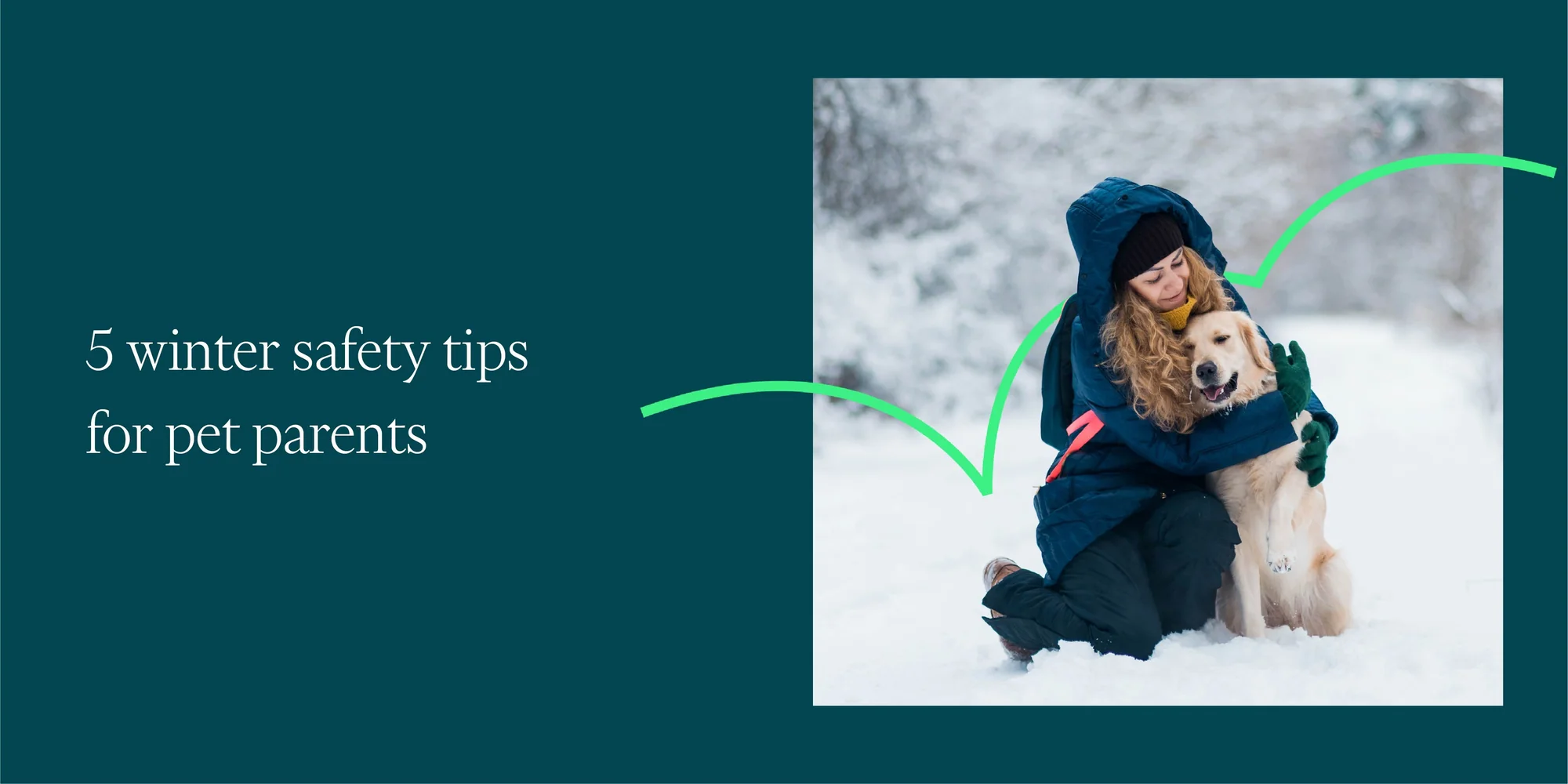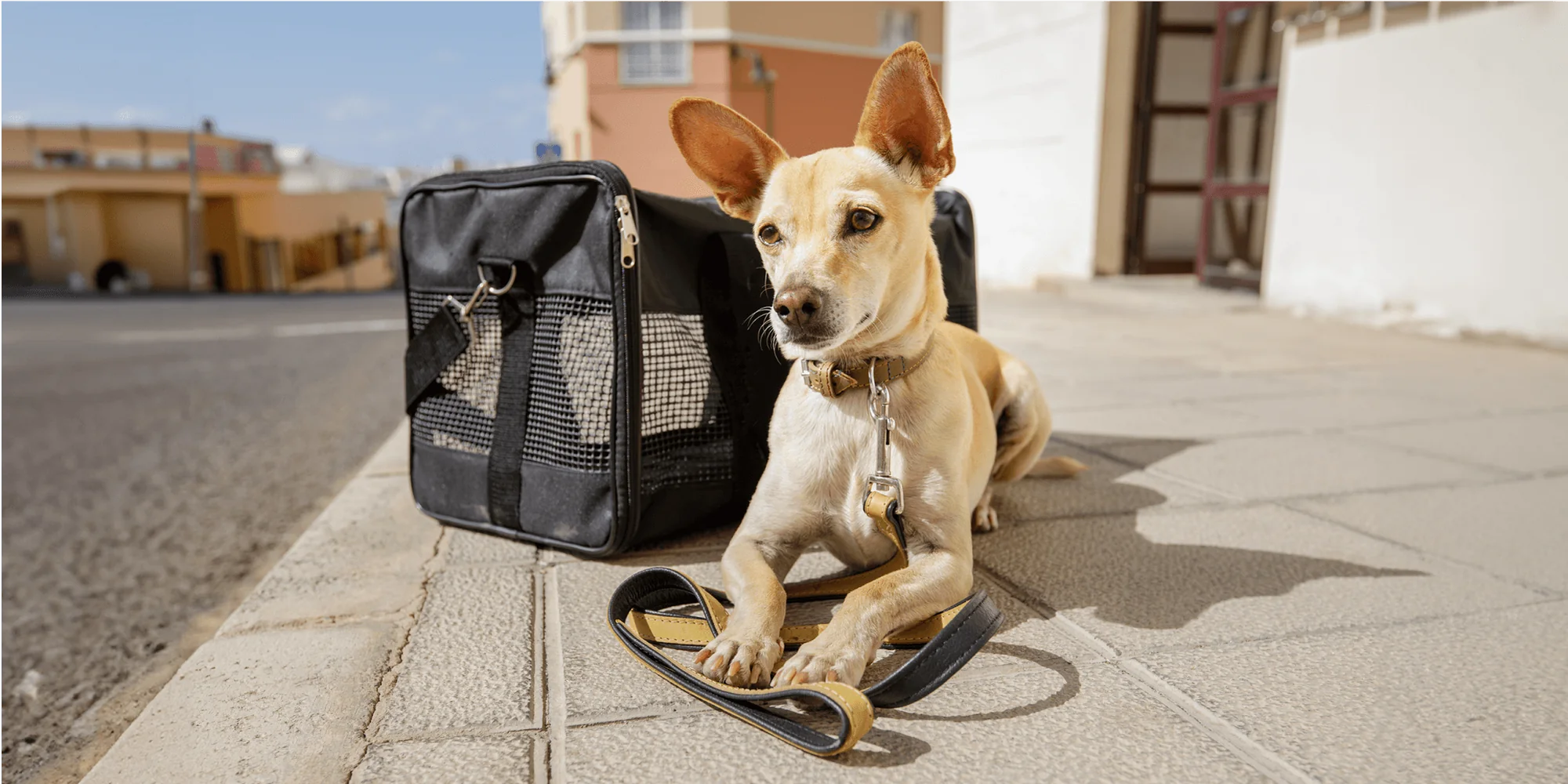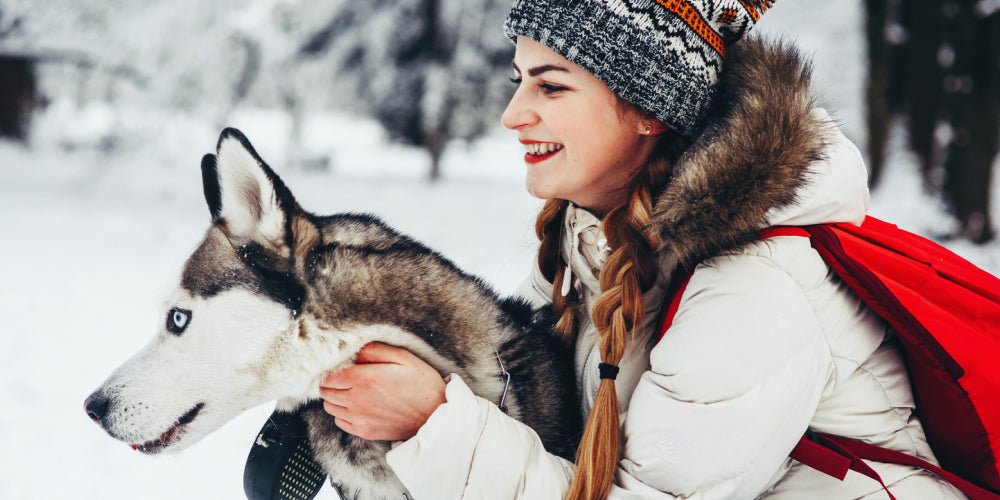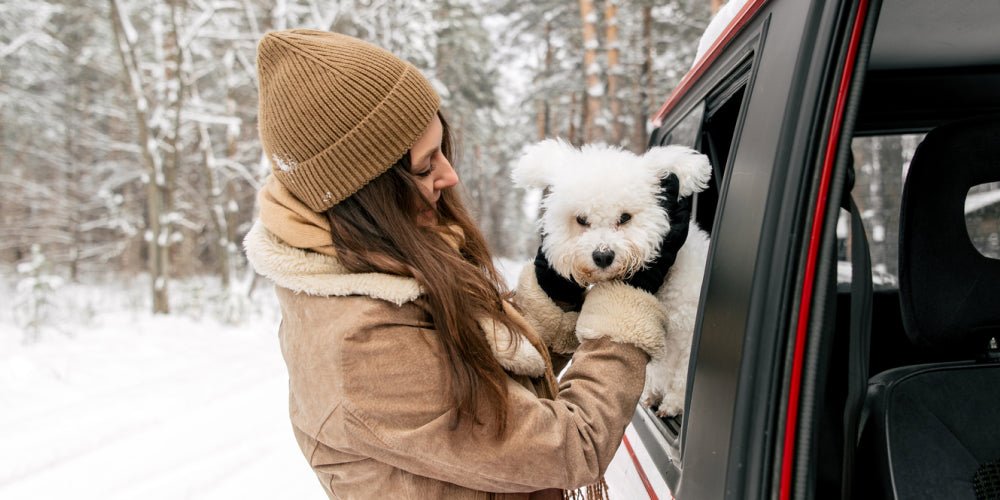The 5 Winter Safety Tips All Pet Parents Need to Know

When the Mercury drops and snow starts to fall, it’s important to know how to keep your dog safe from the elements. This winter, follow these five winter safety tips.
Check the forecast: Your Alaskan Malamute or Bernese Mountain Dog might love cold temperatures and snow but not all breeds can handle winter weather.
The big question: How to keep dogs warm in winter? For short-haired dogs (we’re looking at you, pit bulls, dachshunds and beagles) coat is a good idea when temperatures reach 45° Fahrenheit. Winter gear is even more important when it gets below 20° Fahrenheit and the risk of frostbite and hypothermia goes up, making the right winter gear even more important.
When it’s too brisk for a walk, consider indoor dog parks or building a canine obstacle course in the living room to help protect your dog from cold weather.
Be on the lookout for behavior change: Different dogs have different reactions to the cold. So, when is it too cold to walk your dog? Let your dog decide. Shivering, lifting paws off the ground, stiff movements and tucking their tail between their legs are all signs that your dog is uncomfortable outdoors. Excessive panting or whining are other ways your dog is trying to tell you it’s time to go back indoors.
Stick to dry gear: Being out in the snow can give you—and your dog—a chill. As soon as you get back inside, take off their damp coat or sweater.
Before you head out for another walk or potty break, double check that their outwear is totally dry. If it’s still damp, pop it in the dryer for a few minute or choose another coat. Putting your dog in damp clothing could make them colder, faster, making a winter walk very uncomfortable.
Protect their paws: The chemicals used in ice melt can cause burns on your dog’s paws. Wipe down their paws with a warm cloth after a walk will remove ice melt as well as residue from antifreeze and other chemicals that can be harmful if ingested. Don’t forget to check between their toes in case the little ice melt crystals get stuck.
Providing protection (like booties) is another effective way to protect your dog’s paws from the elements. Booties can also help prevent frostbite on dog paws.
Practice pet loss prevention: No one wants a wintry walk in the woods or romp at the park to turn into disaster.
Since snow and inclement weather can affect your dog's sense of smell and ability to navigate home, make sure they are wearing a collar and their identification tags are up to date. Investing in a dog GPS location monitor like the Whistle Health & GPS can provide real time location data to help find your pet if he gets lost.
Planning ahead for the colder months ensures your dog will be healthy, happy and safe once the snow starts to fall.









